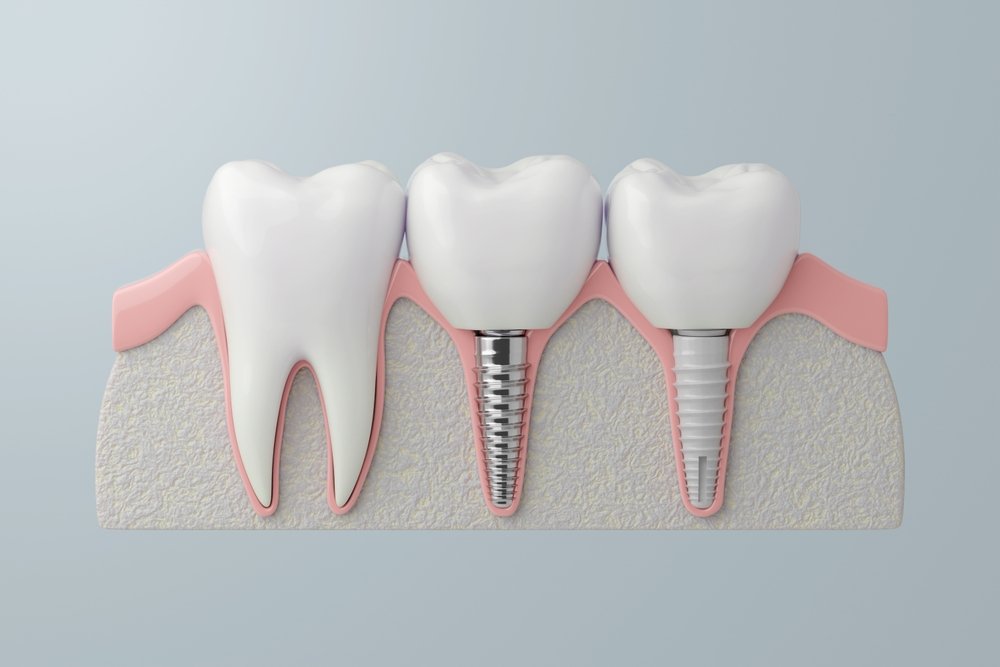Dental implants continue to evolve, offering patients long-term restorative solutions with high success rates. While titanium implants remain the most commonly used material in modern implant dentistry, zirconia implants have become a promising alternative—especially for patients with metal sensitivities or aesthetic concerns.
At First Dental Studio, we work with both titanium and zirconia-based implant restorations, supporting Canadian dentists in making case-specific decisions based on soft tissue health, occlusal forces, and patient preferences.
Key Differences Between Titanium and Zirconia Implants
| Feature | Titanium Implants | Zirconia Implants |
| Material Composition | Titanium alloy (typically Ti-6Al-4V) | Y-TZP (yttria-stabilized tetragonal zirconia polycrystals) |
| Osseointegration | Excellent, well documented | Comparable, but with less long-term data |
| Aesthetics | Grey hue; may show through thin tissue | White; blends better with natural dentition |
| Metal-Free | No (contains trace metals) | Yes (ceramic-based, metal-free) |
| Gum Health | Proven track record | Promising soft tissue response |
| Fracture Risk | Very low | Slightly higher, especially under tensile forces |
| Flexibility | Higher elasticity | Lower elasticity, more brittle |
Why Titanium Is Still the Gold Standard
Titanium dental implants have been used for over 40 years with extensive clinical studies showing 95–98% success rates across various patient profiles. Their high biocompatibility and excellent osseointegration make them a trusted option for single units, full-arch restorations, and immediate placement.
Pros:
- Proven durability and strength
- Flexible design options (two-piece, small diameter, angled)
- Predictable integration and long lifespan
Cons:
- Can show through thin or receding soft tissue
- Aesthetic challenges in anterior cases
- Contains trace metals (e.g., vanadium or aluminum)
When to Consider Zirconia Implants
Zirconia is a ceramic material that offers both biocompatibility and aesthetics. Because of its white, tooth-like colour and lack of metal, zirconia is ideal for patients with metal allergies or anterior implant cases where appearance is a priority.
Newer two-piece zirconia implants offer greater flexibility and strength compared to the original one-piece versions. This makes it possible to place the implant subgingivally, allow for proper osseointegration, and attach a custom abutment—much like titanium systems.
Pros:
- Metal-free for sensitive patients
- Improved gingival response in thin biotypes
- Excellent aesthetic outcomes
Cons:
- Less long-term data
- More prone to micro-fractures during adjustment
- Fewer prosthetic options available in some systems
Case Planning with Zirconia or Titanium: What to Consider
When selecting implant materials, dentists should consider:
- Tissue biotype: Zirconia often performs better in thin or translucent gingival tissues where titanium might show through.
- Occlusal load: Titanium remains superior in high-stress areas due to its elasticity and strength.
- Patient preferences: Some patients strongly prefer metal-free options for health or personal reasons.
- Restoration design: Titanium systems offer more abutment choices, angulation correction, and smaller diameter options.
Partnering with a Lab That Supports Both Options
At First Dental Studio, we help you plan and restore both zirconia and titanium implant cases. We work with Canada’s top implant platforms including:
- Straumann
- Nobel Biocare
- BioHorizons
- Z-Systems / SDS Swiss Dental Solutions (for zirconia systems)
From scan to final prosthetic, we ensure a precise, aesthetic fit—whether your case is metal-free or traditional.
Need Help Choosing the Right Material?
Every implant case is unique. If you’re planning a restoration and unsure whether titanium or zirconia is the right choice, our experienced team is here to support you.



